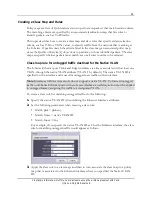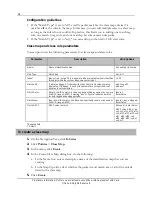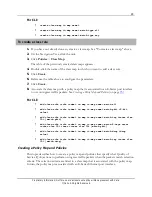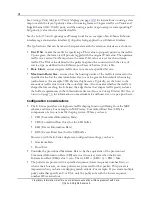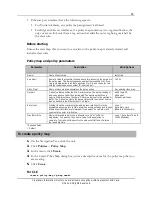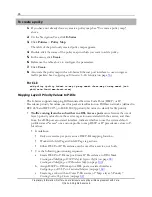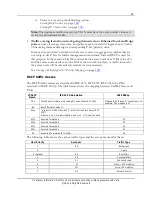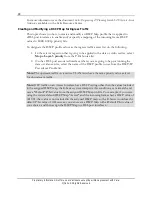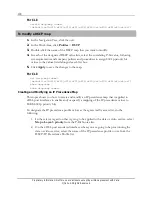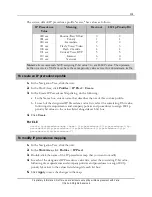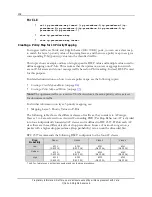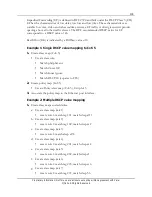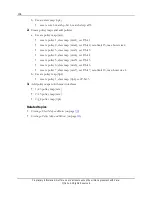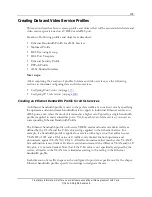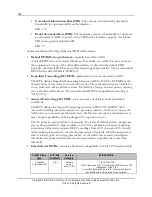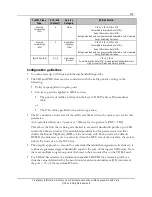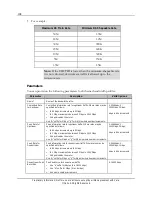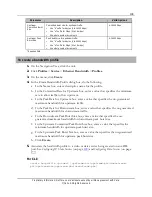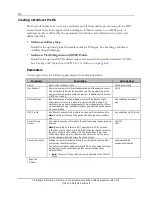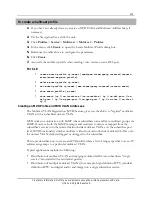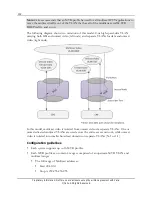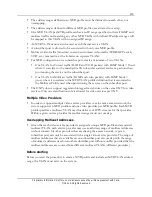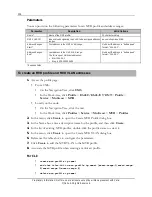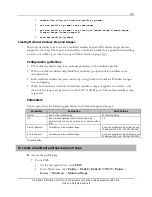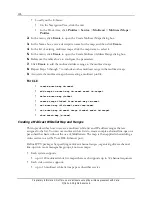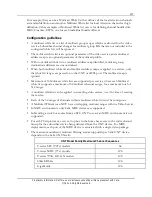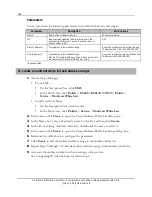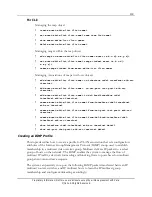
105
Proprietary Information: Not for use or disclosure except by written agreement with Calix.
© Calix. All Rights Reserved.
Creating Data and Video Service Profiles
This section describes how to create profiles and objects that will be associated with data and
video services provisioned on a VDSL2 card xDSL port.
Creation of following profiles and objects are described:
Ethernet Bandwidth Profile for xDSL Services
Multicast Profile
DSL Vectoring Group
DSL Port Template
Ethernet Security Profile
PPPoE Profile
xDSL Bonded Interface
Next steps:
After completing the creation of profiles for data and video services, see the following
sections to continue configuring data and video services:
Configuring Data Services
(on page
177
)
Configuring IP Video Services
(on page
189
)
Creating an Ethernet Bandwidth Profile for xDSL Services
An Ethernet bandwidth profile is used to shape data traffic at a consistent rate by specifying
the upstream and downstream bandwidth rates to apply to individual Ethernet services on
xDSL ports, even when the modem is trained at a higher rate. Typically, a single bandwidth
profile is applied to many subscriber ports. Yet, for each level of data service, you need an
corresponding Ethernet Bandwidth Profile.
The Ethernet bandwidth profile on E-series VDSL2 cards and nodes rate limits traffic as
defined by the VLAN and the P-bit value settings applied to the Ethernet Service. For
example, if a bandwidth profile is applied to a service with a tag action that adds an outer
VLAN ID of 901 and a P-bit value of 0, traffic is rate limited for both upstream and
downstream against VLAN 901/P-bit 0. All traffic downstream that matches this VLAN/P-
bit combination is rate limited. If video is sent downstream with a different VLAN and/or P-
bit value, it is not rate limited. Note that if the P-bit value is not specifically assigned by the
service, all traffic in the VLAN is rate limited according to the setting in the Ethernet
bandwidth profile.
Each direction of a traffic shaper can be configured to provide a specific rate for the shaper.
Ethernet bandwidth profiles specify two settings to designate the rate:

